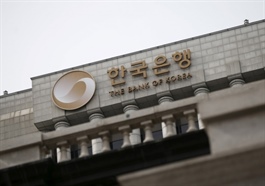Roadmap outlined to abolish credit quotas
Roadmap outlined to abolish credit quotas
Vietnam is set to pilot the removal of its long-standing credit growth quota from 2026, with its central bank tasked to design a criteria-based roadmap aimed at boosting market openness while also safeguarding financial stability.
Prime Minister Pham Minh Chinh on August 6 tasked the State Bank of Vietnam (SBV) with developing a roadmap and piloting the removal of the long-standing credit growth quota mechanism from 2026. The directive forms part of a broader package of measures aimed at stimulating economic growth, containing inflation, safeguarding macroeconomic stability, and ensuring the country’s key economic balances.
The SBV is to work closely with relevant ministries and agencies to closely track both domestic and global economic developments, proactively crafting suitable monetary policy scenarios. Management, PM Chinh emphasised, must remain flexible and effective, while aligning with fiscal policy and other macro tools to support growth, control inflation, and ensure adequate capital for production and business activities.
The prime minister underscored the need for the SBV to design a detailed roadmap and implement a controlled pilot programme for abolishing the credit quota system, which has for years been a key instrument in regulating total system-wide lending. Participation in the pilot will be limited to credit institutions meeting strict criteria, including sound and efficient operations, strong risk management, compliance with prudential ratios, and consistently high credit quality.
In parallel, the SBV must accelerate restructuring of the credit system in association with handling non-performing loans. The focus will be on expediting bad debt resolution, enhancing credit quality, preventing new non-performing loans, and managing lending to high-risk sectors.
PM Chinh further called on the banking sector to cut costs, simplify admin procedures, and accelerate digital transition to enable lower lending rates, thereby improving access to capital for businesses and individuals in a period of strong recovery.
At the SBV’s half-year review in early July, Pham Chi Quang, director general of the Monetary Policy Department under the SBV, noted that while the central bank intends to fully remove the credit quota system, the process must fit Vietnam’s specific conditions. “The goal is to increase autonomy of credit institutions while ensuring system safety and inflation control,” he said.
Quang noted that in 2024, credit growth quotas were allocated to all institutions at the outset of the year. By early 2025, however, the SBV had lifted requirements for foreign banks, joint-venture banks, and non-bank credit institutions, retaining it only for domestic commercial lenders.
“The removal of quotas could place upward pressure on interest rates, making it essential for the SBV to manage rates proactively and conduct a thorough impact assessment before submitting a final roadmap to the government,” he cautioned,
Nguyen Quoc Hung, secretary general of the Vietnam Banks Association, said removal is appropriate given that major banks have adopted Basel III standards and strengthened their capital bases.
“Banks will be able to lend more proactively, avoiding situations where capital is available but constrained by quota limits,” he noted. However, he stressed the need for each bank to set internal safety ratios and for the SBV to develop clear prudential criteria.
While removal of credit growth quotas promises greater market openness, experts caution that a number of issues warrant close attention.
Speaking at a seminar on credit control in Hanoi in late July, Nguyen Hoang Linh, research head at Vietcombank Fund Management, said the move would signal to investors that the country’s banking market operates more transparently and in line with market principles, thereby strengthening investor confidence.
“For large commercial banks with robust capital, strong risk management, and high-quality customers, eliminating credit ceilings would provide greater flexibility for expansion,” Linh noted. “These factors enhance the attractiveness of Vietnamese banks in the eyes of investors, positively influencing capital inflows, a particularly important consideration for banks planning to raise capital in the near future.”
However, Linh cautioned that without credit ceilings, the SBV would face the challenge of guiding capital towards priority sectors and preventing excessive flows into higher-risk areas such as securities and real estate. “Removing the quota without effective tools to direct capital flows could result in misallocation, where industrial production struggles to secure financing while speculative real estate absorbs disproportionate funding,” he warned.
Pham Xuan Hoe, general secretary of the Vietnam Financial Leasing Association, added that the SBV could deploy mandatory bills, capital adequacy buffers for medium- and long-term lending, and ratios of total mobilised capital to equity to prevent liquidity mismatches. “With these tools and a technocratic approach, the removal of credit quotas should not be a cause for concern,” he said.
- 11:55 18/08/2025
























